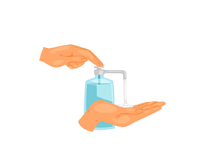Rocuronium
Rocuronium is a non-depolarizing muscle relaxant used primarily in medical settings to facilitate endotracheal intubation and to relax skeletal muscles during surgeries or mechanical ventilation. It works by blocking the transmission of nerve impulses to muscles, resulting in muscle relaxation. Rocuronium is commonly used in both elective surgeries and emergency procedures to ensure patient comfort and safety during anesthesia. The onset of action is rapid, and the duration of effect can be controlled with the appropriate dosage adjustments.
Uses of Rocuronium
- Facilitates endotracheal intubation
- Used to relax muscles during surgery
- Assists in mechanical ventilation
- Effective in both elective and emergency surgeries
How Rocuronium Works
Rocuronium works by blocking the action of acetylcholine at the neuromuscular junction, preventing nerve impulses from reaching the muscles. This results in muscle paralysis, allowing for intubation and muscle relaxation during surgery. The effects can be reversed with specific medications if necessary.
Benefits of Rocuronium
- Provides rapid and controlled muscle relaxation
- Facilitates easier and safer intubation during surgeries
- Shorter duration of action compared to some other muscle relaxants
- Allows for precise control over muscle relaxation and recovery during anesthesia
- Reduces discomfort during mechanical ventilation
How to Take Rocuronium
Rocuronium is administered intravenously by a healthcare provider, typically in a hospital or clinical setting. The dosage and administration are based on the patient's weight, medical condition, and the specific procedure being performed. The effects are monitored closely, and adjustments may be made to ensure adequate muscle relaxation throughout the procedure.
Type of Dosage Available
- Injectable solution
Side Effects of Rocuronium
- Hypotension (low blood pressure)
- Respiratory depression
- Bradycardia (slow heart rate)
- Allergic reactions (rare)
- Muscle weakness post-surgery
- Skin rashes or hives
Safety Advice
- Rocuronium should only be administered by a trained medical professional in a controlled setting
- Inform your doctor if you have any history of allergies, especially to neuromuscular blocking agents
- Notify your healthcare provider if you have heart, liver, or kidney conditions before use
- Ensure close monitoring of vital signs during its administration
- Pregnant and breastfeeding women should consult a doctor before use
Frequently Asked Questions (FAQs)
Q. What is Rocuronium used for?
A. Rocuronium is used as a muscle relaxant during surgeries and for endotracheal intubation to ensure muscle relaxation and facilitate mechanical ventilation.
Q. How is Rocuronium administered?
A. Rocuronium is administered intravenously by a healthcare provider in a controlled medical environment.
Q. Are there any side effects of Rocuronium?
A. Side effects may include hypotension, respiratory depression, bradycardia, and in rare cases, allergic reactions or muscle weakness.
Q. Can Rocuronium be used for emergency procedures?
A. Yes, Rocuronium is commonly used in emergency surgeries and procedures to facilitate intubation and muscle relaxation.
Q. Is Rocuronium safe for pregnant or breastfeeding women?
A. Pregnant or breastfeeding women should consult a healthcare provider before using Rocuronium to evaluate the risks and benefits.
Download India's most affordable pharmacy app
- Compare with medicine prices
- Save upto 90% on your medicine bills

Temperature Controlled storage and delivery

Regular Sanitization

Disinfected Packaging














 Added!
Added!